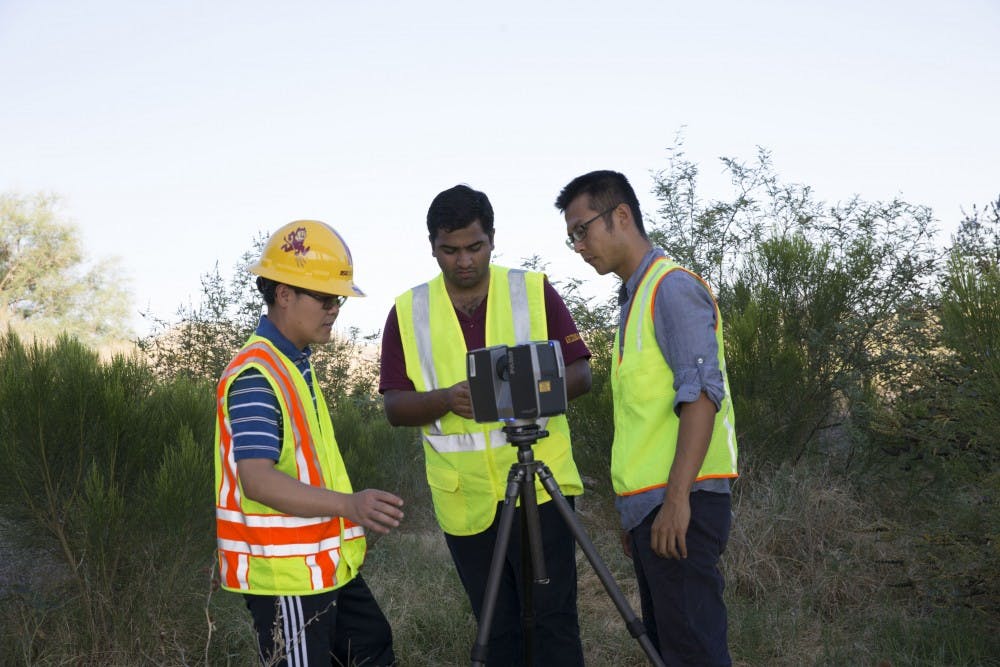Earlier this year, a reported 58,000 U.S. bridges — a little over 10 percent of the country's total — were found to be 'structurally deficient.'
Now, an ASU research team working out of the Del E. Webb School of Construction is looking to revamp the way specialists analyze these bridges, hoping to make a lasting impact.
Bridges are some of the most beleaguered infrastructure in the country.
"The American Society of Civil Engineers, they do a survey, and they give ranks to each and every infrastructure in the US," Vamsi Kalasapudi, a PhD student in construction engineering, said. "When it came to bridges, they gave a D."
However, the current evaluation system is flawed, and the data it yields isn't always accurate, he said.
"They are wasting a lot of time and a lot of money," Kalasapudi said. "You need to measure it in different places, you need to stop traffic. It's inconvenient, it's not that safe, and you need to invest a lot of time and money. Not just one guy can do it, you need at least three or four."
Pingbo Tang, an assistant professor at the school of sustainable engineering, oversees the researchers.
He said that currently, when evaluating the state of a bridge, the ASCE "will rely on a civil engineer who has a picture and he'll say 'ok, this change means dangerous change, and that change means nothing.'"
Kalasapudi believes this experience based model of evaluation is the cause of America's bridge problems. His solution lies in a new technology called laser scanning.
Using spatiotemporal cameras placed evenly around a bridge, laser scanning is able to take images before and after several months, using the data to determine which bridges are in need of repair before they become deficient.
"Basically, when you have a girder it should be under bending, when you have a column it should be under compression," Kalasapudi said. "But when you have a bridge that has compression, tension, and bending, that means you have some problems."
His project observes this using a set of highly sophisticated 3D cameras. Kalasapudi's software analyzes bridges for changes on the order of millimeters.
One of Kalasapudi's peers, Cheng Zhang, said he would also like to see the field of laser scanning grow.
"If it's successful, I think this technology will be integrated with many other technologies involving computer vision," Zhang said.
Kalasapudi first trialed this technology during a project that analyzed the pipes in boiler rooms. This project went on to win a $500,000 award from the National Science Foundation.
During that project, Kalasapudi set up the cameras so that they could discover whether the builders of the boiler room made any changes to the schematics when assembling the pipes.
Since then the software has evolved to allow the analysis of a structure as large as a bridge. It's also fairly easy to use — it requires a single person to place cameras around a bridge and take photos. And, it has already been tested on a series of bridges in China.
"Dr. Tang went to China and he collected almost fifteen different types of bridges, single pier bridges, highway bridges, arc bridges," Kalasapudi said. "And we just collected his data in August, so we're processing it now."
Reach the reporter at sdeadric@asu.edu or follow @deadrick_sam on Twitter.
Like The State Press on Facebook and follow @statepress on Twitter.




